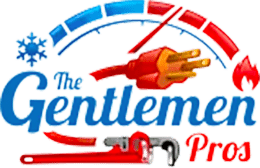
Same Day Service
Since 1992
Call The Gentleman Pros Now!
(780) 628-1734

Safe and reliable electricity is a necessity in our day-to-day lives. Can you imagine what it would be like if we didn’t have it? Thankfully, with a little help from the Gentlemen Pros, you should never have to experience an extended period of time without power. True, we can’t control grid outages but we can make sure that if the grid is providing power, all areas of your home have power.
“Mohamed S was our technician, and if possible we will absolutely try and request him again! He was courteous, knowledgeable, and had a great attitude all day! He came out to fix our shower valve installation (originally installed by others) and while he was here, we asked if we could add to his scope of work, which he accepted with a positive attitude. We are very happy with the end product and would highly recommend this company to others!” Alexa A

A bold statement to be sure but we stand behind it. We know the Canadian Electrical Code and all the appropriate regulations and guidelines like the back of our hand. And our work meets and exceeds all of them. We even guarantee it, if our work doesn’t meet local, provincial, and federal guidelines, we will refund you your money.
No matter what you need to be installed, from wiring for a new addition to upgrading your lighting fixtures to wiring a couple of new outlets for you, we’ve got you covered.
Our main concern is you. We want you to be comfortable with us in your home and confident in our work. To that end, we hire good people who do great work.
Call us with any of your electrical questions, our customer service reps are happy to help. Please call (780) 628-1734, select the Chat With Us icon in the bottom right-hand corner of this page, or complete our convenient online form.
In North America, knob and tube wiring can be found in houses built pre-1950s. It was the usual way to wire a house for electricity from the 1880s to the 1930s. Its favour started to wane after the 1930s and was rarely used starting in the 1950s.
Unlike our modern wiring where the hot, neutral, and ground wires are bundled together, the hot and neutral wires are separate. The two wires were spaced usually four to six inches from each other. We didn’t mention a ground wire because knob and tube wiring does not have one.
Knob and tube wiring takes its name from the parts used to support the copper electrical
wires as they run through the house.
As the insulated hot and neutral wires travelled throughout the house they were supported by porcelain barrel-shaped knobs that were typically secured to the wall studs or floor joists.
The wires were wrapped around a groove in the knob and fastened in place with tie wires. Though some knobs were two-piece knobs and the wires passed through the middle of the two pieces.
The knobs kept the wires from touching the home’s frame (which might be combustible), helped when the wiring needed to change directions, and prevented the wires from being under too much tension.
When the black “hot” wire and the white neutral wire needed to go through a joist or stud, a hole was drilled. The wires were then placed in a protective porcelain tube that was inserted into the hole. The tubes protected the wires from fraying and stopped them from being in contact with the potentially flammable wood.
In this case, loom does not refer to a weaving machine. Loom is an insulated flexible protective cloth sleeve the wires were inserted into. They were used when the wires had to go through a wall or were entering a wiring device. Wiring devices included switches, outlets, and lamps.
Early looms were made of a braided cotton cloth which was soaked in asphalt until it became saturated. Later loom was made of a rubberized cloth.
There are three main problems with knob and tube wiring.
Grounding is an important electrical safety feature in today’s homes and became standard in the 1950s and 1960s. Knob and tube wiring was prevalent pre-1950s.
The grounding system consists of a third wire that is bundled with and connected to all the same things as the hot and neutral wires. The purpose of the grounding wire is to capture any electricity that “escapes” from either the hot or neutral wire and carry the escaped electricity back to its source.
Knob and tube wiring doesn’t have a ground wire, so the escaped electricity will use any conductive materials it finds to travel back to its source. People and pets are conductive and electricity will use us and our loved ones to travel through. Electricity can cause serious injury and even death to living things. Also, when electricity travels on an unprotected path, the risk of electrical fire increases significantly.
Because knob and tube wiring doesn’t have a grounding wire, their outlets only have two prongs. The third prong in our modern outlets connects to the ground wire.
Knob and tube wiring carries a lower current (amperage) compared to today’s wiring. It is unable to carry sufficient amperage to power all the electrical appliances and devices we currently depend on.
Knob and tube wiring typically could handle a maximum of a 60 amp service whereas today many houses have an electrical service between 100 and 200 amps.
Knob and tube wiring isn’t inherently dangerous. Its danger lies in its age.
Over time, the wires can corrode and sag leading to loose connections.
Due to age, the protective insulation covering the copper wires becomes brittle and starts to crack and flake off. This leaves the electrical wires exposed increasing the likelihood of fires if the wires come in contact with flammable materials.
Many of the problems with knob and tube wiring come from improper alterations made by well-intentioned DIYers. Many of the components are no longer available and have not been available for quite some time. This led people to improvise solutions, many of which were unsafe. Sometimes this work even caused damage which has only been made more dangerous with time.
Though the Canadian Electrical Code does not allow newly installed knob and tube wiring, it doesn’t require its removal.
You may have trouble insuring a home with knob and tube wiring. Many companies consider it high risk. Some companies will require you to remove it, others may require a safety inspection, and others simply won’t insure a home with knob and tube wiring.



